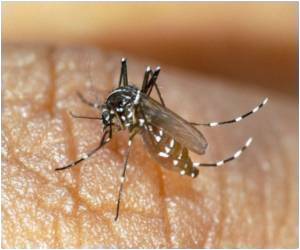Experts are urging greater thrust on research into the forest dengue, known as the “sylvatic dengue.” The disease is raging in Southeast Asia and Western Africa, they say.

While this variety is much talked about, its forest-dwelling counterpart doesn’t seem to merit much attention, and it needs to be remedied, say the authors of “Fever from the forest: Prospects for the continued emergence of sylvatic dengue virus and its impact on public health,” an article published online June 13 in Nature Reviews Microbiology.
“This virus continues to circulate in the forests, and now economic and ecological pressures are driving more and more people into the forests in Africa and Southeast Asia,” said University of Texas Medical Branch at Galveston assistant professor Nikos Vasilakis, lead author of the paper. “In the last 10 years we’ve seen a number of outbreaks of disease with real public health impact caused by what we call zoonotic viruses, viruses that start out in wild animals but can also be transmitted to humans — look at SARS, Nipah and Hendra, for example. Sylvatic dengue could be capable of a similar emergence — or rather, re-emergence, since we know previous dengue spillovers into urban and near-urban settings have occurred.”
Dengue virus may also be capable of movement from the widespread urban cycles into primates and forest mosquitoes of Latin America, which would establish a new reservoir for human infections in the New World.
In the paper, Vasilakis and his collaborators identify two factors that make a dengue re-emergence a “clear and present danger”: rapid human population growth near and in tropical forests, and the fact that little or no genetic change would be needed for sylvatic dengue to adapt to human hosts and urban mosquitoes.
“Experiments show that there is little or no adaptive barrier to the emergence of sylvatic dengue into human populations,” Vasilakis said. “In other words, the virus can emerge from its current environment at any time, without further adaptation.”
Advertisement
“We see a precedent for this with yellow fever, where we have a very good vaccine — urban yellow fever has been nearly eliminated in some regions — but we don’t have good vector control programs, and especially in South America we now have outbreaks fueled by sylvatic yellow fever,” Vasilakis said. “If we eradicate human dengue and then stop vaccinating, as we often do after the disease disappears, we could see a re-emergence of dengue from a sylvatic source.”
Advertisement
“Of all the viruses with the potential to shift from animals into humans, the most likely to do so are those that, like sylvatic dengue, are carried by the non-human primates and/or bats,” Vasilakis said. “For our own good, we need to know as much as we can about this virus.”
Source-Medindia







